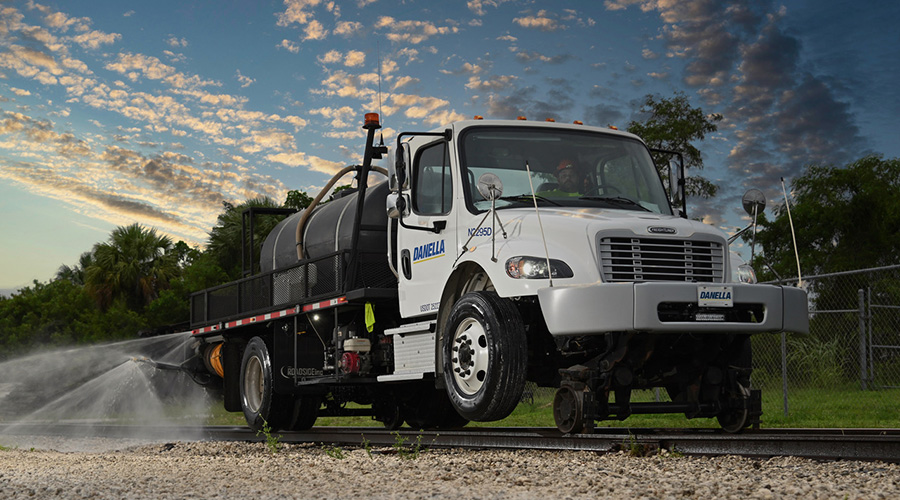Stay updated on news, articles and information for the rail industry
April 2008
Rail News: MOW
MOW '08 Introduction
The number of respondents is exactly the same and the aggregate results are similar. Thirty-three of 55 freight and passenger railroads that responded to Progressive Railroading’s 7th annual maintenance-of-way (MOW) survey have increased their budget compared with last year’s total.
In 2007, 37 of 55 respondents budgeted more.
Given that five of the respondents didn’t provide budget figures and two budgeted the same amount — and nearly half of the more than 130 freight and passenger railroads polled returned surveys — the results are promising. Although the economy remains sluggish, operating costs keep rising and traffic hasn’t necessarily been increasing, many railroads are investing millions or billions of dollars in infrastructure maintenance.
And the budget increases aren’t solely tied to labor and material cost hikes, or catch-up maintenance (the goal of several passenger-rail respondents seeking a state of good repair). A number of the respondents plan to complete major projects that address infrastructure priority No. 1: capacity.
For example, Union Pacific Railroad has budgeted a similar $1.6 billion for MOW in ’08, but the Class I more than doubled its network and terminal capacity budget from 2007’s $421 million to $840 million. In addition, Norfolk Southern Railway expects to spend $625 million vs. last year’s $569 million primarily to install more rail and improve docks at a coal pier in Norfolk, Va.
With ridership soaring to record levels, many passenger railroads are expanding capacity, too. Of the 14 (out of 21) respondents that have boosted their MOW budgets, a majority are aiming to construct or improve stations, and build, extend or upgrade lines.
MTA New York City Transit’s budget nearly doubled from $1.1 billion to $2 billion because of an increase in ’08 projects (including rehabs to 27 stations to the tune of $388.1 million) and the Chicago Transportation Authority’s budget almost doubled from $140.5 million to $269 million to eliminate slow zones on several lines.
Among the 13 of 25 regional/short line respondents that’ve budgeted more for MOW, several also have capacity in mind.
The Greenville & Western Railway Co. L.L.C.’s budget skyrocketed from $72,000 to $800,000 to build and upgrade infrastructure for traffic generated by a new ethanol facility (see Regionals/Short ).
The availability of state funds for capacity-related projects caused the Heart of Georgia Railroad’s budget to jump from $120,000 to $2.8 million and East Penn Railroad’s to rise from $750,000 to $1.1 million.
But funding continues to be a thorny issue for some short lines, especially since the federal tax credit legislation expired at 2007’s end — the primary reason the New York, Susquehanna & Western Railroad’s budget dropped 43 percent from $3.5 million to $2 million.
In the following three sections, we’ve broken down the 55 freight and passenger railroads’ MOW plans (arranged by budget amounts) to show how they’ll divvy up dollars to tackle capacity and maintenance needs.
MOW ‘08 CONTENTS |


 2025 MOW Spending Report: Passenger-rail programs
2025 MOW Spending Report: Passenger-rail programs
 Gardner steps down as Amtrak CEO
Gardner steps down as Amtrak CEO
 Guest comment: Oliver Wyman’s David Hunt
Guest comment: Oliver Wyman’s David Hunt
 Women of Influence in Rail eBook
Women of Influence in Rail eBook
 railPrime
railPrime







